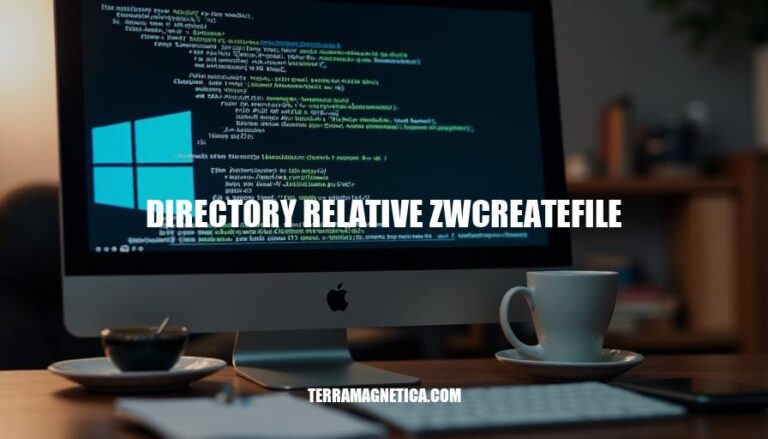


The ZwCreateFile function in Windows is a kernel-mode routine used to create or open files, including directories. When used with the FILE_DIRECTORY_FILE option, it specifically handles directory creation or opening. This function is crucial for file handling in the Windows operating system as it allows for precise control over file and directory operations, ensuring efficient and secure access management.
The ZwCreateFile function in Windows is used to create or open a file. It takes several parameters, including a handle to the file, desired access, object attributes, and more.
One of the key features of ZwCreateFile is its ability to specify the file name in two ways:
ObjectName member of the OBJECT_ATTRIBUTES structure.RootDirectory member of the OBJECT_ATTRIBUTES structure. The RootDirectory member contains a handle to a directory, and the file name is given relative to this directory.This directory-relative path feature allows for more flexible file management, especially in complex directory structures.
A directory relative path specifies a file location relative to a directory handle rather than using an absolute path.
When using the ZwCreateFile function, you can provide this relative path in the ObjectAttributes structure. Specifically, you set the RootDirectory member to a handle of the directory you want to use as the base. The ObjectName member then contains the relative path from this directory.
This approach allows for more flexible file management within a known directory structure.
The RootDirectory member in the OBJECT_ATTRIBUTES structure specifies a handle to a directory. When using ZwCreateFile with a directory-relative path, this handle serves as the base directory for the relative path specified in the ObjectName member. If RootDirectory is NULL, ObjectName must be a fully qualified path.
Using a directory relative path with ZwCreateFile can be beneficial in several practical scenarios:
Sandboxed Environments: When working within a sandboxed environment, using relative paths ensures that file operations are confined to a specific directory, enhancing security by preventing access to unauthorized areas.
Modular Applications: In applications with a modular structure, relative paths allow different modules to access their respective directories without hardcoding absolute paths, making the application more flexible and easier to maintain.
Dynamic File Management: For applications that dynamically create and manage files within a directory structure, using relative paths simplifies file operations by allowing the application to reference files relative to a known directory handle.
Portability: Relative paths enhance the portability of code across different systems and environments, as the code does not rely on absolute paths that may vary between systems.
Resource Isolation: In scenarios where resources (like configuration files or logs) need to be isolated within specific directories, using relative paths ensures that all file operations are contained within the designated directory, preventing accidental overwrites or access to other resources.
These scenarios highlight the flexibility and security advantages of using directory relative paths with ZwCreateFile.
Here are common issues and solutions when using directory relative paths with ZwCreateFile:
Incorrect Relative Path:
Access Denied:
File Not Found:
Path Length Limitations:
\\?\ prefix to extend the maximum path length.Incorrect CreateOptions:
CreateOptions specified, such as not setting FILE_DIRECTORY_FILE for directories.CreateOptions are set when opening or creating directories.Using directory relative paths with ZwCreateFile offers several benefits, including flexibility, security, and portability. It allows for more precise control over file operations within complex directory structures.
This approach is particularly useful in sandboxed environments, modular applications, dynamic file management scenarios, and resource isolation situations.
However, it requires careful handling of relative paths to avoid common issues such as incorrect path resolution, access denied errors, file not found errors, path length limitations, and incorrect create options.
By understanding these considerations, developers can effectively utilize directory relative paths with ZwCreateFile for efficient and secure file management.